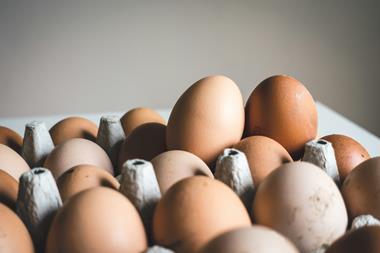
Focus On: Lunchboxes & Back To School, by Rob Brown
Publishing: 4 July
Copy deadline: 24 June
Download the synopsis
Submissions deadline: 15 June
FEATURE ONE: ADULT LUNCHBOXES
The story
Covid-19 has changed the definition of a working lunch. As millions of adults are forced to work from home – or not work at all – there is little need for the traditional lunchbox. But that doesn’t mean lunchbox items are suffering. Brits are still looking for inspiration in their midday meals – and, if anything, their tastes are getting more adventurous as they have ready access to their kitchens. So, how have people’s lunchtime tastes changed? What will a typical workday lunchbox be like once people return to their offices?
Key themes
The new working lunch: How have traditional lunchbox occasions declined during lockdown? And what is the nation doing to replace these occasions? Are they still looking to traditional lunchbox items such as sandwiches, or are they getting more varied in their repertoires?
Cuisine: Will lunchboxes get fancier in the future, now that Brits are supposedly more adventurous with their cuisine? Could we see more sushi, samosas and kefir, and fewer crisps, sarnies and yoghurt pots?
Health: Consumers are becoming more aware of their health in the light of covid-19. So does this mean more salads for lunch? Which other options are benefiting?
Leftovers: With more people than ever scratch cooking, will leftovers be on the rise? How much influence will the coming recession have on people choosing leftovers for lunch?
Kantar data: Using Kantar commentary we explain the changes in adult lunchbox occasions.
Innovations: New adult-oriented lunchbox products or product ranges that have ideally not appeared in The Grocer before including launch date, rsp and a hi-res picture.
Out of home: As lunchtime favourites such as Pret, Greggs and Eat close their doors, what impact is that having on grocery sales?
Dieting: With many people likely to have packed on the pounds during lockdown, how might they fight the flab through their pack-up choices? What do weight-loss experts advise to eat instead of sarnies?
FEATURE TWO: BACK TO SCHOOL
The story
Infant school children are about to return to the classroom. In spite of being entitled to free school lunches, some have been told to take a packed lunch. Why? Is it for practical health reasons? Or does it herald the end of free school lunches as the UK awaits a new wave of austerity? How ready are fmcg brands for this likelihood? What products will they offer?
Key themes
Lockdown: Children have been stuck at home for months. What have they been eating instead of their lunchbox favourites? What new choices could best translate to school-day pack-up?
Free lunches: How have they operated during Covid-19, and what is their likely future for infant school pupils and older kids on benefits?
Health: What are the main health concerns of teachers, parents and the government regarding lunchboxes? Have they changed over the past year? How are brands helping to serve them?
New players: New brands have recently joined the kids’ snacking market? Why, and how? Who else is doing it?
Kantar data: Using Kantar commentary, we explain the types of products most popular in children’s lunchboxes.
Innovations: New child-oriented lunchbox products or product ranges that have ideally not appeared in The Grocer before including launch date, rsp and a hi-res picture.
Downloads
Lunchbox
PDF, Size 0.13 mb













No comments yet